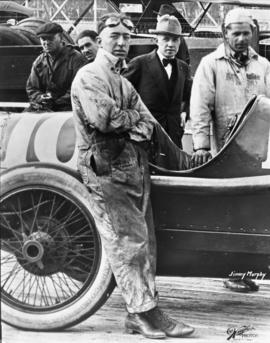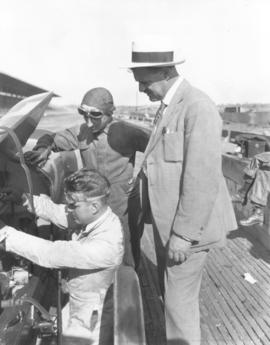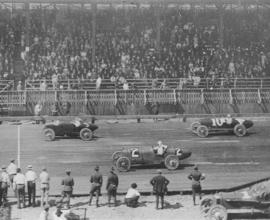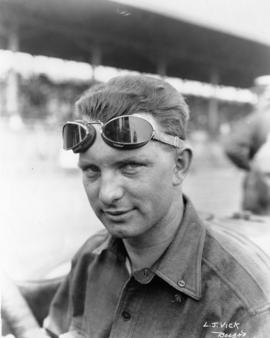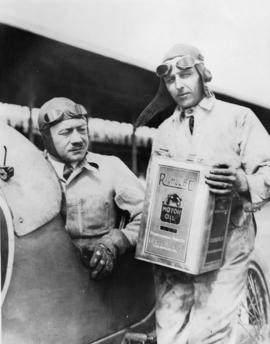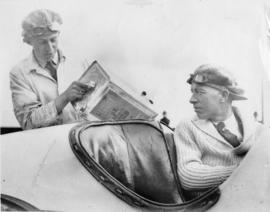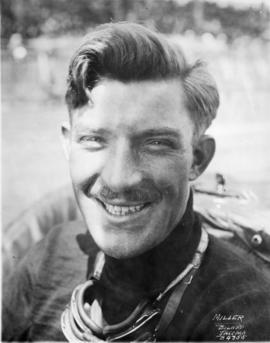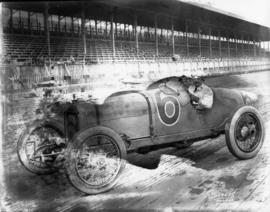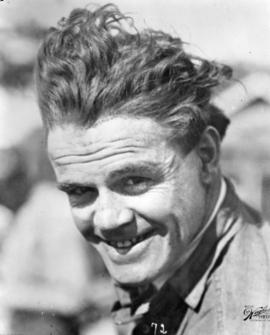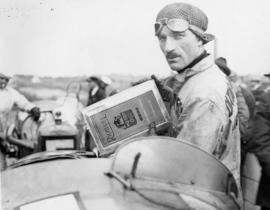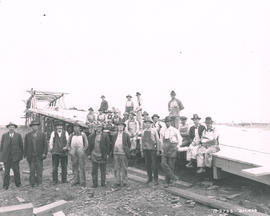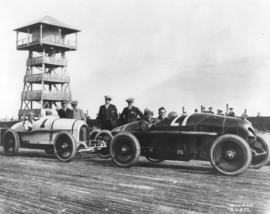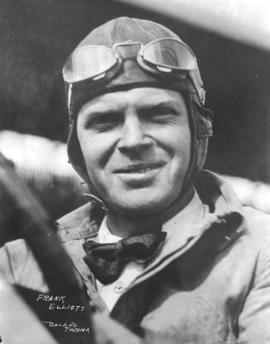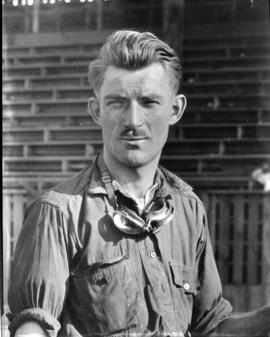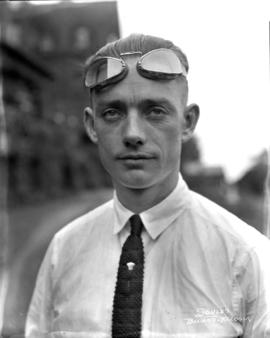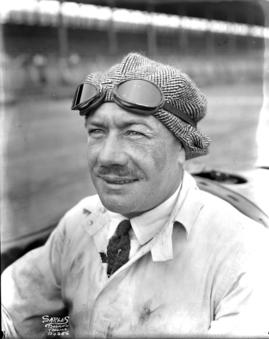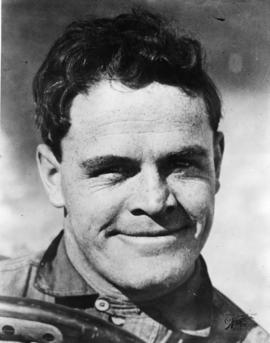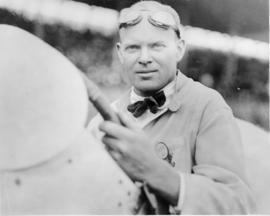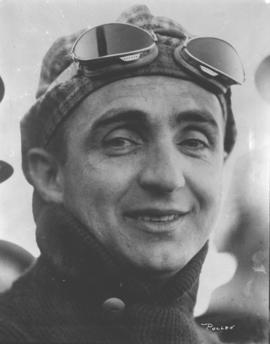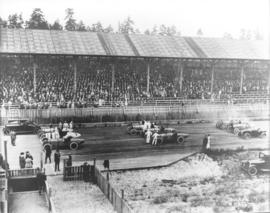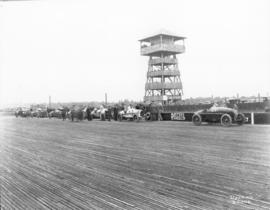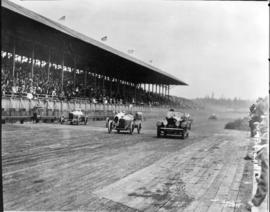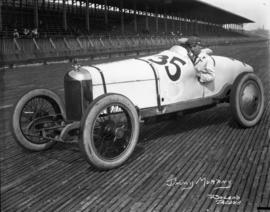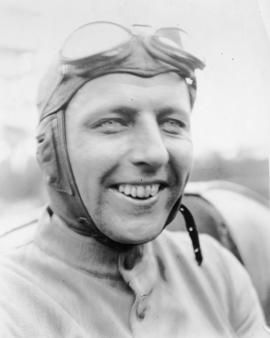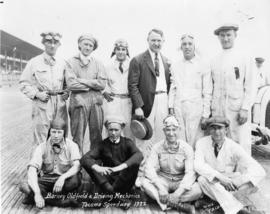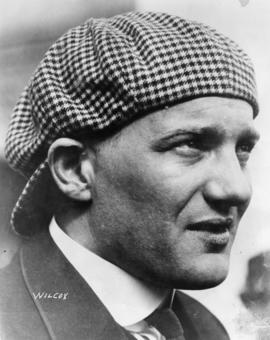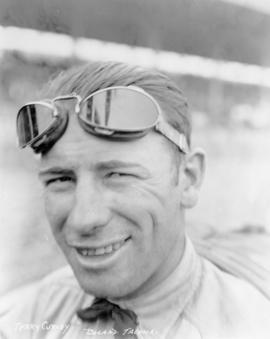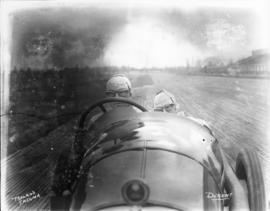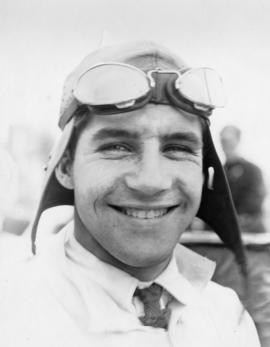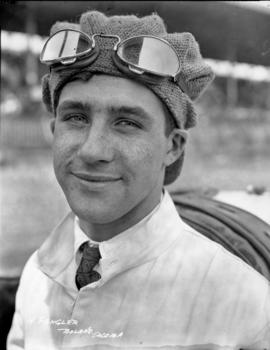- Item
- 1920-07
Part of Marvin Boland Photographs
New racing sensation Jimmy Murphy stands next to a Duesenberg racer #10 at the Tacoma Speedway. He was in Tacoma for the July 5, 1920 225 mile Classic. Born in 1895, Murphy was left an orphan. Going to work at a young age, he made the acquaintance of the racing world at the garage where he was employed in California. He joined Duesenberg as a riding mechanic on his 21st birthday in 1916, and was promoted to driver in 1919. He took the racing world by storm in 1920, winning the first race of the season, also his first personal major race, the inaugural of the Beverly Hills 1 1/4 mile board track and setting a world record to boot. He went on to finish 4th in the 1920 Indy and 6th in Tacoma (behind Tommy Milton, Ralph Mulford and Eddie Hearne.) He was the shooting star of racing during his short 4 year and 9 month career. He won the 1922 Indy 500 and was the first American driver to win the Grand Prix (in 1921.) Jimmy Murphy was killed in a crash at Syracuse, New York, in September of 1924. (Jimmy Ralstin's Racing Home Page; www.ddavid.com/formula1/; TDL 7/6/1920, pg. 1) SPEEDWAY 030
Racing automobiles--1910-1920; Duesenberg automobile; Tacoma Speedway (Lakewood); Racetracks--Lakewood--1910-1920; Automobile racing--Lakewood--1910-1920; Murphy, Jimmy; Automobile racing drivers;
